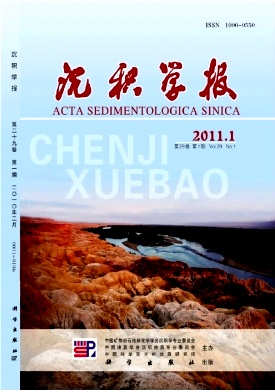Barrier Lagoon Sedimentary Model and Reservoir Distribution Regularity of LowerOrdovician Majiagou Formation in Ordos Basin
- Received Date: 1900-01-01
- Rev Recd Date: 1900-01-01
- Publish Date: 2011-02-10
-
Key words:
- Ordos Basin /
- Majiagou Formation /
- barrier lagoon /
- sedimentary model /
- reservoir prediction
Abstract: Lower Ordovician Majiagou Formation is composed of six members in which Ma1,Ma3 and Ma5 are evaporate including dolomite, anhydrite and salt and Ma2, Ma4, Ma6 are limestone with dolomite in Ordos Basin. Majiagou Formation is formed by cyclic sedimentation by intermeshed evaporite and carbonate. Upwarps around the basin and a downwarp in the centre of the basin constitute the EarlyOrdovician Palaeogeomorphologic pattern. Upwarps as underwater barriers led to exchange limitation between lagoon and exterior sea and weakness of lagoon hydrodynamic force during high sea level stage. During low sea level stage, upwarps resulted in the entire isolation between lagoon and exterior sea. Owing to the strong evaporation, lagoon level was greatly lower than exterior sea level .So lagoon margin flat was partly exposed to atmosphere and the deep sag in the centre of the basin was covered by concentrated bittern.
〓〓Analysis of single well and well tie sedimentary facies demonstrates the depositional setting from Ma1 and Ma2 member is composed of two integrating cycles from transgression to regression due to sea water invasion from the east and southeast of the basin. Ma3 member is mainly composed of regressive deposition owing to the rapid extensive transgression in the early Ma3 stage. North China sea, Qilian oceanic trough and Qinling oceanic trough formed a united basin and the centre uplift zone was developed to a platform margin , the west of the centre uplift zone was developed to a basin and a slope and the east of the centre uplift zone was developed to a broad lagoon during the biggest sea water invasion in Ma4 stage. Ordos Basin was isolated from exterior sea and the salty lagoon was changed to a salt lake gradually during Ma5 stage owing to sea level descend and barrier of the centre uplift zone. In Ma6 stage the Basin was changed to a broad lagoon.
〓〓Based on the pioneer research of paleostructure, paleogeography, paleohydrodynamic as well as paleoclimate, a new model barrierlagoon sedimentary model of Majiagou Formation is developed. The model includes three phases during transgression to high sea level (phaseⅠ), carbonate deposits in broad barrierlagoon, and mixed carbonate /evaporate succession in concentrated lagoon during regression (phaseⅡ), and anhydrite and salt in saline during low sea level( phaseⅢ).
〓〓And two main types of carbonate reservoir including the dolomite reservoir in relation to karstification and the crystallization dolomite reservoir in connection with dolomitization are discovered in this paper. The authors further analyze the carbonate reservoir distribution law within the mentioned model, conclude that beachflat of platform edge of the model(phase Ⅰ)and lagoon margin flat of phaseⅡ are favorable for reservoir growth and point out that the reservoir of Majiagou Formation is karst type and is mainly distributed on the top of Ma5,Ma3 and Ma1 Formation. Anhydrite and salt of phase Ⅲ are important seal rock.
| Citation: | ZHOU Jingao. Barrier Lagoon Sedimentary Model and Reservoir Distribution Regularity of LowerOrdovician Majiagou Formation in Ordos Basin[J]. Acta Sedimentologica Sinica, 2011, 29(1): 64-71. |






 DownLoad:
DownLoad: